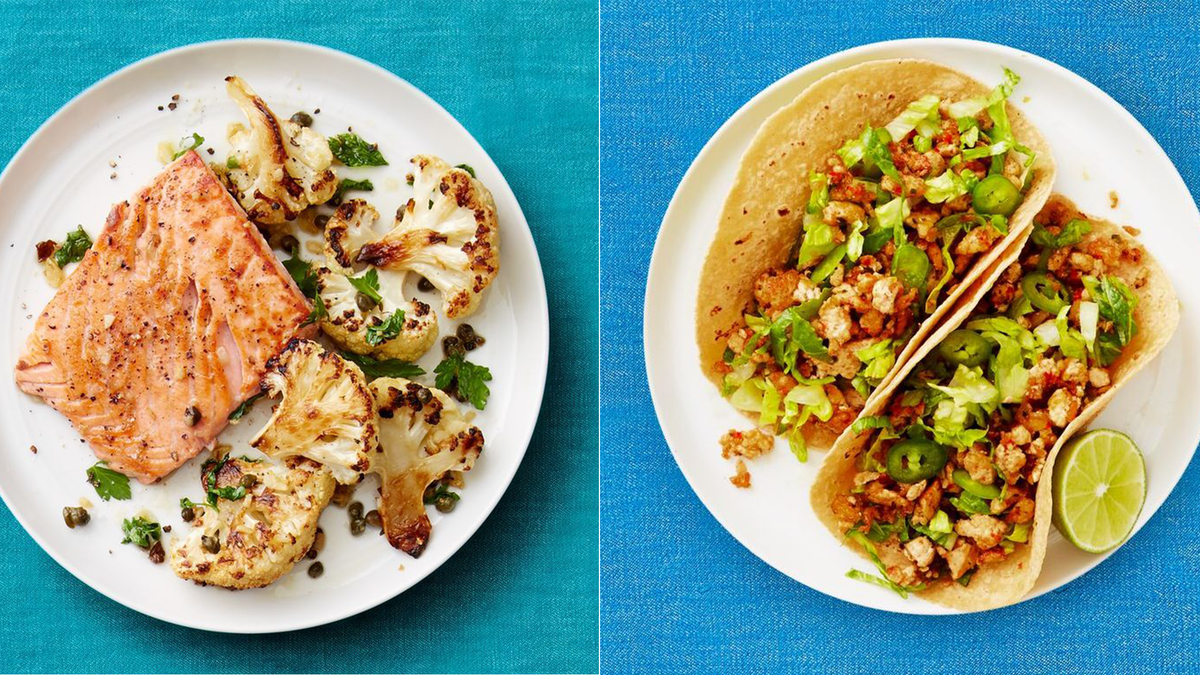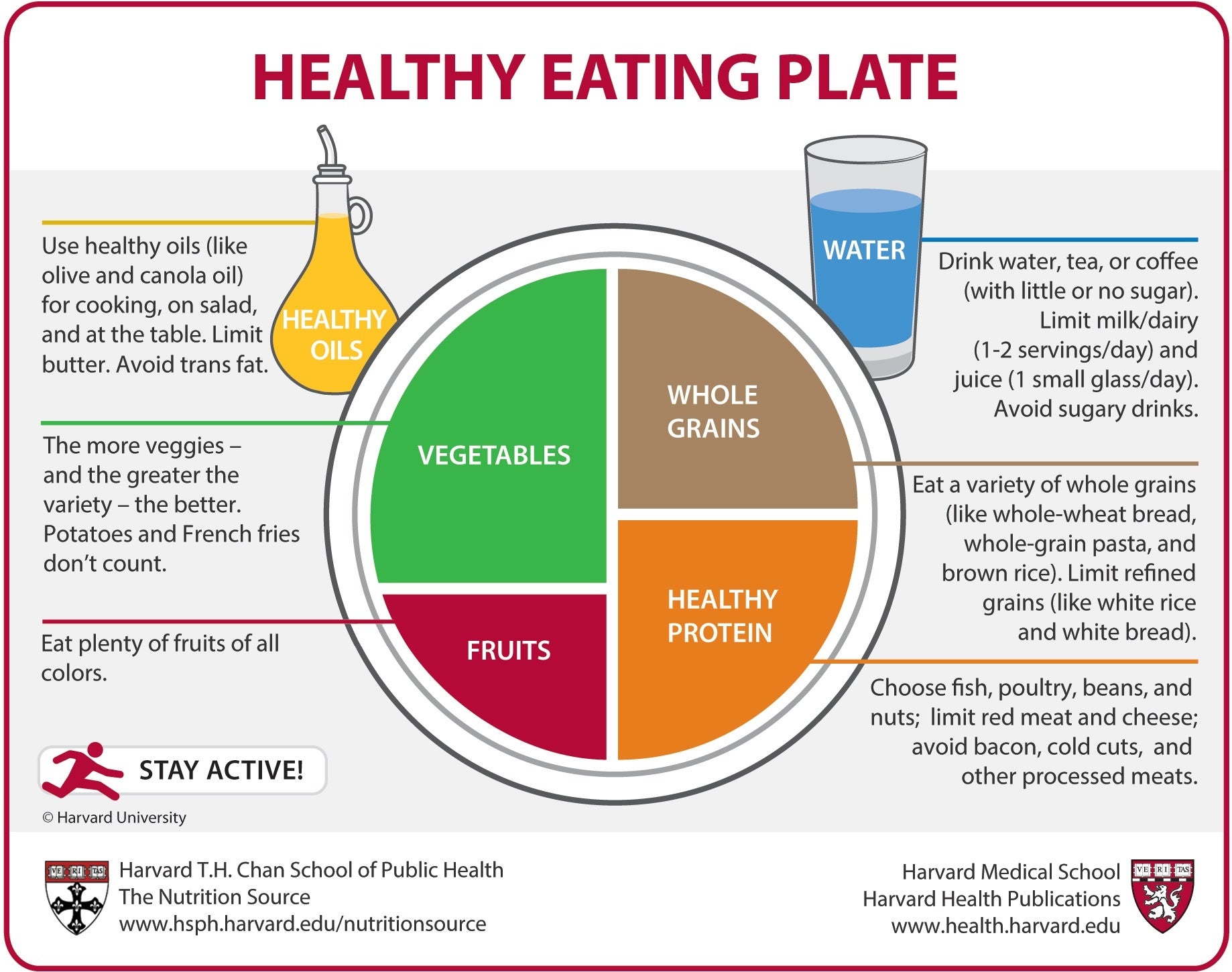Nutritional Harmony Unveiled: Exploring a Balanced Diet Example
A balanced diet includes whole grains, lean proteins, fruits, vegetables, and healthy fats. It provides essential nutrients for optimal health and energy.
A balanced diet is crucial for maintaining overall health and well-being. It ensures the body receives all the necessary nutrients, vitamins, and minerals for proper functioning. A balanced diet includes a variety of foods from different food groups.
It should consist of whole grains, such as brown rice and whole wheat bread, lean proteins like chicken, fish, and beans, various fruits and vegetables, and healthy fats like avocados and olive oil. By adopting a balanced diet, individuals can promote a healthy weight, reduce the risk of chronic diseases, and improve overall health.
:max_bytes(150000):strip_icc()/article_2060706_healthy-weight-gain-meal-plan_-04-7c417d6a368048f6ac9ea114b507357f.jpg)
Credit: www.eatingwell.com
Components Of A Balanced Diet
A balanced diet includes a variety of essential nutrients such as carbohydrates, proteins, fats, vitamins, and minerals. For example, a balanced diet might include whole grains, lean proteins, fruits and vegetables, and healthy fats to support overall health and well-being.
| Carbohydrates | Proteins | Fats | Vitamins | Minerals | Water |
|---|---|---|---|---|---|
| Provide energy | Build and repair tissues | Aid in nutrient absorption | Support immune function | Maintain healthy bones | Regulate body temperature |
| Found in foods like grains, fruits, and vegetables | Present in meat, poultry, fish, eggs, legumes, and dairy products | Found in oils, nuts, seeds, and fatty fish | Found in fruits, vegetables, and whole grains | Found in meat, dairy, and plant-based foods | Obtained from beverages, fruits, vegetables, and soups |
| Should form a significant chunk of daily calorie intake | Essential for growth, muscle development, and repair | Provide insulation and protect organs | Needed for overall health and well-being | Involved in various bodily functions and processes | It keeps the body hydrated and aids digestion |

Credit: www.prevention.com
Building A Powerful Balanced Diet Plan
A balanced diet is vital to maintaining a healthy lifestyle. Focusing on the right foods and portion control ensures your body gets all the nutrients it needs. Here’s a breakdown of the essential aspects to consider when creating a robust, balanced diet plan:
Determining Caloric Needs
Before diving into food choices, it’s essential to determine your caloric needs. This involves calculating how many calories your body needs to function optimally. Factors such as age, gender, activity level, and weight goals come into play. Online calculators or consulting a registered dietitian can help find the appropriate caloric intake.
Choosing The Right Foods
Once you know your caloric needs, choosing foods that provide a variety of nutrients is essential. Aim for a good balance of carbohydrates, proteins, and fats. Include plenty of fruits, vegetables, whole grains, lean proteins, and healthy fats. Avoid processed foods and excessive sugar or salt intake.
Meal Planning
Developing a meal plan can simplify your balanced diet journey. Plan your meals and snacks ahead of time to ensure you have nutritious options readily available. Include a mix of different food groups at each meal, and consider portion sizes to meet your caloric goals. Also, enjoy your meals mindfully, savoring the flavors and listening to your body’s hunger and fullness cues.
Portion Control
Portion control is crucial for maintaining a balanced diet. It’s essential to be aware of appropriate serving sizes to avoid overeating. Use visual cues, like your hand or everyday objects, to estimate portion sizes. Additionally, pay attention to your body’s satisfaction signals and stop eating when you feel comfortably full.
Example Balanced Diet Plan
Breakfast:
- Include a source of protein such as eggs or yogurt.
- Add whole grains like oatmeal or whole wheat bread.
- Incorporate fruits and vegetables for essential vitamins and minerals.
- Opt for healthy fats like nuts or avocado.
Lunch:
- Choose lean protein sources like chicken or fish.
- Include a variety of vegetables and leafy greens.
- Incorporate complex carbohydrates such as quinoa or brown rice.
- Consider adding a small portion of healthy fats from olive oil or seeds.
Snacks:
- Opt for nutritious options like fruits, nuts, or Greek yogurt.
- Try to include a mix of protein, healthy fats, and fiber.
- Avoid sugary snacks or processed foods.
Dinner:
- Include a source of lean protein such as tofu or lean meat.
- Incorporate a variety of vegetables for added nutrients.
- Choose whole grains or legumes as a source of complex carbohydrates.
- Limit added sugars and unhealthy fats.

Credit: www.hsph.harvard.edu
Tips For Maintaining A Balanced Diet
Reading food labels is an essential habit for maintaining a balanced diet. Ensure you check the nutritional information on products to make informed choices about portion sizes, added sugars, and unhealthy fats. Avoiding processed foods is another crucial factor. These often contain high levels of salt, sugar, and harmful additives. Opt for whole foods like fruits, vegetables, and lean proteins instead.
Staying hydrated is vital for overall health. Drink plenty of water throughout the day to support digestion, maintain body temperature, and transport nutrients. Eating mindfully is another effective strategy. Take the time to savor each bite, listen to your body’s hunger and fullness signals, and minimize distractions during meals.
| Benefits of a Balanced Diet | Ways to Achieve It |
|---|---|
| Improved energy levels | Incorporate a variety of nutrient-dense foods |
| Enhanced mental clarity | Plan and prepare well-balanced meals |
| Weight management | Avoid excessive calorie intake |
| Reduced risk of chronic diseases | Limit processed and unhealthy foods |
Lastly, keep track of your progress in maintaining a balanced diet. Set realistic goals and monitor your food choices and portion sizes. This can help you identify areas for improvement and make adjustments along the way.
Frequently Asked Questions Of Balanced Diet Example
What Is An Example Of Eating A Balanced Diet?
A balanced diet includes consuming various fruits, vegetables, lean proteins, whole grains, and healthy fats to meet nutritional needs.
What Are The 5 Balanced Diets?
The five balanced diets include the Mediterranean, DASH, Flexitarian, MIND, and Nordic diets. These diets emphasize whole foods, fruits, vegetables, lean proteins, and whole grains and minimize processed foods, added sugars, and unhealthy fats.
What Are The 7 Things You Need In A Balanced Diet?
A balanced diet should include fruits, vegetables, whole grains, lean proteins, healthy fats, low-fat dairy products, and limited added sugars and sodium.
What Are Examples Of Balanced Meals?
Balanced meals include grilled chicken with roasted vegetables, salmon with quinoa and steamed broccoli, or tofu stir-fry with brown rice. These meals combine protein, carbohydrates, and vegetables for a well-rounded and nutritious diet.
Conclusion
Adopting a balanced diet is crucial for maintaining optimal health and well-being. By incorporating various nutrient-dense foods, such as fruits, vegetables, whole grains, lean proteins, and healthy fats, your body can have the essential nutrients it needs to function correctly.
Remember to practice portion control and make mindful food choices to ensure the best outcomes for your overall health. So, start embracing a balanced diet today and reap the numerous benefits it has to offer.